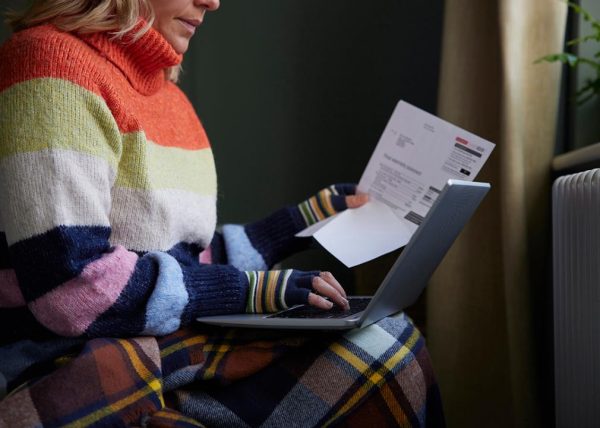When it comes to monthly costs, not many utilities vary as much as an electric bill. No matter the provider or location, rates can spike for more reasons than increased usage. So when utility companies don’t offer explanations, people are left wondering, “Why is my electric bill so high and how can I lower it?”
Your power bill depends on several factors, some less visible or in your control than others. To root out the cause of these utility spikes, Arbor explains what causes high electric bills and how to lower them. Read on to learn how to reduce your power bill without sacrificing money or comfort.
13 Reasons for a high electric bill
For anyone who’s ever asked what causes high electric bills, here are the top 13 reasons explaining an unexpected increase.

1. You could be on a high electricity rate
A high cost per kilowatt hour is the likeliest culprit behind a high energy bill. Even a minor change in wholesale pricing can lead to bill hikes. This is especially true in deregulated states where providers set their own rates to compete with each other.
Additionally, on some plans, the cost of running electrical appliances varies over a day. During peak hours of usage, electric companies charge higher rates for the same amount of electricity used. These peak times change during different months of the year and depend on location. That said, peak hours tend to fall:
- In the morning from 6 a.m. to 9 a.m.
- After work from 5 p.m. to 9 p.m.
- On holidays like July 4th, Memorial Day, Labor Day, Thanksgiving and New Year’s
- Over weekends throughout most of the day
- During periods of extreme heat or cold in the summer and winter
How to lower it:
Research your provider’s rate to see if they charge more during peak hours. From there, look into switching to another provider, avoid using electricity during peak hours, or cut back on energy use in general. You can also check the wattage of appliances to avoid heavy energy consumption.
2. Your area is experiencing extreme weather
Drastic weather fluctuations can play a role in electric bill increases. Whether you’re cranking up the AC or heater, temperature control increases your bill. And when everyone on your grid does the same thing, expect the price increase to run even higher.
How to lower it:
Look for other ways to control the temperature in your home. Bundle up during the winter months or consider using a fireplace. In the summer, remember that fans require much less power than AC units. You can also keep the heat out by closing the blinds.
3. You own devices that draw energy when powered off
You may have heard about vampire devices — electrical appliances that continue to draw power whenever they’re plugged in. As it happens, they need electricity even when they aren’t in use. Many of these devices stay in standby mode instead of fully powering off. While this lets you turn them on faster, you literally pay for it in utilities.
Some common culprits include:
- Smart TVs
- Computers
- Coffee makers
- Chargers
How to lower it:
Unplug vampire devices when they aren’t in use. At the very least, you can pull the plug before vacations or work trips out of town. You can also connect your devices to a power strip and turn it off before you leave the house. This saves time you’d otherwise spend pulling cords from every outlet.

4. There are behind-the-scenes changes to energy prices
Electricity use isn’t the only factor shaping how much you pay monthly. Behind the scenes, getting electricity to your home requires factors outside your control. Electricity costs often surge after an increase in:
- Oil, coal, or natural gas prices (these fossil fuels are burned to generate electricity)
- Fuel and transportation prices from delivering the energy source to a power station
- Power generation availability
- Weather extremes
- Supply chain issues
- World events
- Service charges incurred to maintain grid stability
- Inflation
How to lower it:
Keep your finger on the pulse of any weather- or energy-related events that affect your bill. While these factors aren’t in your control, you can be mindful of using less power when they’re an issue.
5. Your home isn’t properly insulated
If your home isn’t well-insulated, you’ll feel the effects whenever you turn on the air conditioner or heater. With outside temperatures coming in, it takes more power to maintain a comfortable interior. Since heaters and air conditioners take so much energy, even a little extra use can impact your bill. In fact, the heat gain or loss from windows accounts for 25% to 30% of AC and heater usage.
How to lower it:
Get a professional to help assess the condition of your home’s insulation and find any air leaks. Specially, look for:
- Worn out weatherstripping or caulking on your doors and windows
- Airflow in your attic or basement
- Exterior damage that could let air into your home
If you find any leaks, try to patch them up immediately. And if your doors or windows need replacing, opt for energy-efficient windows with better seals and glass.
6. You’re still using incandescent light bulbs
Looking for the culprit behind your high electric bill? Turns out, your light bulbs may take some of the blame. Incandescent light bulbs consume much more energy compared to LED bulbs. Some estimates show that the average household could save $225 per year by switching to LED bulbs.
How to lower it:
Switch your incandescent light bulbs to LEDs. Not only do they take less power, but they cost less and tend to last longer.
7. You’re not maintaining your AC unit
Even a well-functioning AC unit increases your electricity bill. That said, damaged ones add even more to energy costs. Suppose your filters become blocked or the air conditioner gets damaged. In that case, the unit has to work harder to maintain the same temperature.
How to lower it:
Commit to regular AC maintenance. Many problems with your unit don’t warrant a replacement. You can keep your air conditioner in excellent condition by:
- Cleaning the area around your AC coils
- Unclogging condensation drains
- Prepping your unit for winter by protecting it from rain and snow
- Scheduling regular AC filter changes throughout the year
8. Your appliances are past their prime
Using an old appliance can increase your electricity bill — even if nothing is broken. Household units like air conditioners last about 10-15 years. After that, individual parts like the compressor become less efficient. Old refrigerators and washing machines can also become energy drains as they age.
How to lower it:
Once your appliance starts to age out, look into a new model. You can also take this opportunity to choose an energy-efficient replacement. You can find the best choice by keeping two ratings in mind:
- Energy Efficiency Ratio (EER): This figure indicates the ratio of a unit’s cooling capacity to its energy usage. Higher numbers correspond to better energy efficiency.
- Seasonal Energy Efficiency Ratio (SEER): SEER represents the ratio of cooling output to energy consumed in the summer. This figure helps with AC choices in particular.
9. You use your dishwasher and washing machine frequently
Washing machines and dishwashers take up a lot of power in themselves. And since they need large amounts of hot water, they also increase your water heater usage. As a result, these devices are the culprits behind plenty of high energy bills.
How to lower it:
With careful planning, you can use your dishwasher and washing machine more efficiently. Try these tips:
- Only run your dishwasher and washing machine once they’re full.
- Don’t run these appliances daily; designate one or two laundry days a week.
- Hand wash clothes or dishes whenever possible.
10. You’re running your dryer often
Constant dryer use drives your electric bill way up. Compared to other appliances, dryers tend to use the most power. Assuming you pay 15 cents per kilowatt hour, running your dryer for an hour costs 30 to 90 cents. You can calculate your dryer’s cost in three steps:
- Multiply the number of hours your dryer runs by its wattage.
- Divide the result by 1,000 to learn the number of kilowatt hours used.
- Multiply the resulting number by your cost per kWh for your cost per load.
How to lower it:
While you can’t always avoid using your dryer, consider alternative options when possible. For example, after washing your laundry, you can:
- Hang-dry your laundry on an outdoor clothesline.
- Purchase a drying rack if you don’t have access to a yard or want to air-dry clothes in your home.
11. You have more than one of the same appliance
Doubling up on appliances can lead to a huge surge in energy use. While keeping a fridge in your garage or a second set of washers and dryers sounds reasonable, they will impact your bill. Using them at the same time compounds the problem, leading to even higher charges.
Additionally, if your second appliance is an older model, it will increase energy consumption if it’s not running as efficiently as it used to.
How to lower it:
Limit the number of appliances as much as possible. Sometimes, you need a second fridge or an extra set of washers and dryers for large homes — in this case, leaning on the newest, most energy-efficient appliances can help mitigate the problem.
12. You’re in the habit of leaving lights on
Sometimes the most basic pieces of advice make the biggest difference. For example, remembering to turn off the lights can reduce your energy consumption. Leaving lights on when you’re not using a room means leaving money on the table. Assuming you have a better use for it than utility bills, remember to check:
- Each room in your home
- Porch lights
- Garage lights
- Basement and attic lights
How to lower it:
Remember to turn the lights off when you leave a room. Unless you expect to return in the next 10 to 15 minutes, there’s no reason to keep the space lit. If you like to leave a hallway light or lamp on at night, use LED bulbs that consume less electricity.
13. Your hot water heater’s temperature may be too high
By default, many water heaters are set to 140 degrees. However, most households can lower theirs to 120 degrees and save on their energy bill. Twenty degrees may not sound like a significant difference, but because water heaters contribute to so many other appliances, the costs add up.
How to lower it:
Check your water heater’s thermostat dial and ensure it isn’t too high. Lowering it to 120 degrees will save on power and offer all the hot water you need. In fact, going above 120-140 degrees can make your water too hot. By lowering it, you benefit from more comfort and lower bills.
How to lower your electricity bill
Now that you know what makes your electric bill high, you can take steps to lower it. Here are some of the best strategies to decrease your bill.
Research what the average energy bill should be in your area
To maximize your electricity savings, you want to gauge how much you spend each month. Looking at your most recent bill is a good start, but more research will take you further. To get the ball rolling, you should:
- Compare your current electric bill to last year’s bills. This determines how much the average electric bill changed compared to years past.
- Use resources like the U.S. Energy Information Administration to compare your household bills to national data.
- Learn the estimated cost for running different appliances based on electricity rates in your state by checking out the Appliance Energy Calculator.
With all this data, you can get a sense of your payments relative to other households.
Switch electricity providers
If your electric bill climbs higher than others in your area, you may want to switch providers. While only some states offer more than one utility company, shopping around can still lower your bill. Research different companies in your area and ask for a quote before making the switch.
Use a wattage tester to find your high-consuming appliances
Wattage testers help you measure the amount of electricity each appliance consumes. You can make replacements or reduce usage by identifying the biggest energy consumers. Make the most of your wattage tester in just three steps:
- Plug appliances into a wattage tester and then run your device as usual for 24 hours to see the appliance’s electrical usage for that period.
- Multiply your result by 365 to see your appliance’s annual estimated electrical usage.
- Compare your result to the number estimated in the Appliance Energy Calculator.
If your appliance goes way over compared to the estimated usage, there may be a problem causing it to work harder and consume more energy than it should.
Invest in a smart AC controller or a smart thermostat
Smart temperature control systems can lower costs and keep your home comfortable. Compared to older appliances, smart thermostats are generally more energy efficient. On top of that, they bring several cost-cutting features to the table:
- Geofencing automatically adjusts or turns off your temperature control systems when you leave your home.
- Humidity and temperature triggers track the weather to activate heating or cooling systems for optimal comfort and energy efficiency.
- Usage tracking monitors your AC and heater use to highlight energy-inefficient usage.
- Remote controls let you deactivate or adjust heaters and ACs when outside the home.
Correctly use your lights and ceiling fans
Knowing when to use different light fixtures can reduce energy bills. For example, avoid ceiling lights and use a lamp if you only need to light a small area. Compared to overhead lighting, lamps take fewer kilowatt hours. Additionally, don’t leave ceiling fans running when you aren’t in the room or you don’t need them to stay cool.
Tip: Ensure your ceiling fan blades aren’t turning in the wrong direction. With some models, this can make a room warmer. Many new ceiling fan models have a toggle switch to adjust the blade direction:
- Counterclockwise turning helps with cooling
- Clockwise rotation warms up rooms
Strategically plant trees around your home
If you’ve got the patience for it, planting trees can help cool your home. You can block the harshest sunlight by planting them on the south and west sides of your home.
Tip: Avoid planting trees directly under electric wires. If the branches grow and make contact with the lines, it could trigger a fire or recurring power outages.
Follow thermostat setting best practices
You can save on energy bills by limiting the extent you heat or cool your home. While raising or lowering the thermostat as much as possible in the winter and summer is tempting, this increases electricity usage. To avoid this problem, follow these thermostat tips:
- For cooling in the summer, set the thermostat to no more than 78 degrees Fahrenheit during the day.
- For heating in the winter, don’t set the thermostat higher than 68 degrees Fahrenheit.
Understanding why your electric bill is so high starts with recognizing the many factors at play — some visible, others behind the scenes. Whether it’s extreme weather driving up energy usage, outdated appliances struggling to keep up, or unseen culprits like vampire devices drawing power when they’re off, the reasons can vary widely. High electricity rates, poorly insulated homes, and frequent use of heating or cooling systems can all contribute to unexpected spikes. Even simple habits, like leaving lights on or running half-full dishwashers, can add up over time.
To bring those costs down, small changes can make a big impact. Swapping incandescent bulbs for energy-efficient LEDs, managing thermostat settings wisely, and unplugging devices when not in use are easy first steps. Addressing larger issues — like improving home insulation, maintaining your AC unit, or investing in energy-efficient appliances — can further reduce your energy consumption. Smart tools like wattage testers and smart thermostats provide additional ways to identify and tackle high-consuming habits.
Sometimes, however, your power bill might spike for reasons beyond your control — like rising energy prices or sudden inflation. Staying informed about local energy rates and weather events can help you plan ahead and adjust your usage accordingly. And if you live in an area with provider competition, shopping around for a better energy plan could be a game-changer for your wallet.
Ultimately, reducing your electricity bill doesn’t mean sacrificing comfort. It’s about making smarter, more mindful choices. From adjusting daily habits to investing in energy-efficient solutions, you can take control of your power usage, save money, and still enjoy a comfortable home.
This story was produced by Arbor and reviewed and distributed by Stacker. The article was copy edited from its original version.
Re-published with CC BY-NC 4.0 License.







